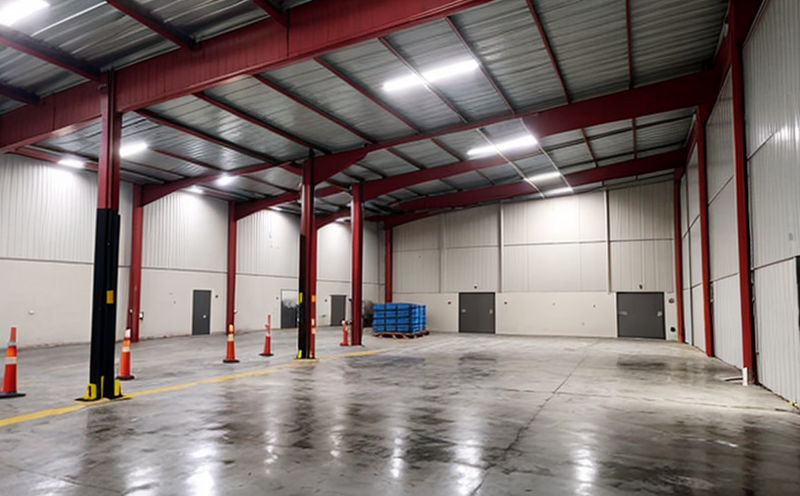Warehouse security inspection
The importance of a robust warehouse and storage system cannot be overstated. It is not just about safeguarding goods but also ensuring that operational efficiency and compliance with legal standards are maintained at all times. Warehouse security inspections serve as the cornerstone for identifying vulnerabilities, enhancing safety measures, and fostering an environment conducive to effective logistics management.
In today’s fast-paced business landscape, warehouses must be prepared to face a multitude of risks including theft, unauthorized access, and operational inefficiencies. A thorough inspection focuses on critical aspects such as perimeter fencing, door security systems, lighting, video surveillance, fire safety measures, and emergency evacuation procedures. The objective is to ensure that these elements are not only in compliance with industry standards but also effectively implemented.
For instance, perimeter fences should be constructed according to the design specifications provided by the warehouse architect. Regular inspections of these fences are essential to detect any signs of wear or damage that could compromise security. Similarly, door access control systems must be rigorously tested for reliability and integrity. This includes checking the functionality of keypads, card readers, and biometric scanners.
Lighting is another crucial component as it directly impacts visibility within the warehouse premises during night hours when activity levels are often high. Inspectors look at both internal lighting systems (such as those in aisles and workstations) and external floodlights around the perimeter. Proper illumination helps deter potential intruders while also improving worker safety.
The role of video surveillance cannot be understated either; it acts as a powerful deterrent against crime by providing visual evidence that can aid investigations if incidents occur. However, mere presence isn’t enough – cameras need to capture clear images under various lighting conditions and at different angles covering all key areas such as entrances/exits, loading docks, and high-value storage zones.
Fire safety measures form an integral part of any security inspection since they protect not only the valuable inventory but also the lives of employees. Fire detection systems (smoke detectors, heat sensors) should be regularly calibrated and tested to ensure their accuracy. Extinguisher placement is another important factor; they must be located in strategic positions where they can reach most parts of the facility quickly.
Emergency evacuation procedures are equally vital as they allow personnel to vacate the premises safely in case of an emergency situation such as fire or natural disaster. The inspection process involves assessing exit routes, exits themselves (including width and accessibility), and signage indicating directions for safe escape paths.
Why It Matters
A well-executed warehouse security inspection plays a pivotal role in safeguarding the assets within your facility while enhancing overall operational efficiency. By identifying potential weaknesses early on, you can implement corrective actions before they escalate into full-blown crises that could lead to significant financial losses.
- Reduces risk of theft and vandalism
- Ensures compliance with relevant regulations and standards
- Fosters a culture of safety and security among staff members
- Improves operational efficiency by minimizing disruptions caused by security incidents
Theft is one of the most pressing concerns for any warehouse owner or manager. Unauthorized access can lead to substantial financial losses if not addressed promptly. By conducting regular inspections, you create a hostile environment for thieves and reduce their chances of succeeding.
Compliance with regulations such as OSHA (Occupational Safety and Health Administration) in the United States or similar bodies elsewhere is crucial for maintaining legal standing. Non-compliance can result in hefty fines and penalties that could severely impact your bottom line. Regular inspections help ensure adherence to these guidelines, thereby protecting you from potential liabilities.
Creating a safe working environment contributes positively towards employee morale and job satisfaction. When staff feel secure knowing that their workplace is protected against threats, they are more likely to stay engaged and productive. This ultimately leads to better performance across all aspects of your business operations.
Scope and Methodology
| Aspect | Description |
|---|---|
| Perimeter Fencing | Inspection includes checking the condition, height, and material used for perimeter fencing ensuring it meets design specifications. |
| Door Security Systems | Includes evaluation of various types of locks, access control mechanisms (keypads, card readers), and biometrics installed on doors leading to sensitive areas. |
| Lighting | Covers assessment of both internal and external lighting systems including their placement, intensity, and energy efficiency ratings. |
| Video Surveillance | Includes review of camera angles, resolution quality, night vision capabilities, and data storage facilities. |
| Fire Safety Measures | Involves examination of fire detection systems, extinguisher placement, fire alarms, emergency lighting, and evacuation procedures. |
The methodology employed during a warehouse security inspection involves thorough walkthroughs coupled with detailed assessments using specialized equipment. Inspectors use advanced tools like thermal cameras to detect heat signatures indicative of potential hot spots or electrical faults that could lead to fires. They also employ motion detectors and sound analyzers to evaluate the effectiveness of intrusion detection systems.
Once all aspects have been reviewed, a comprehensive report is prepared detailing findings along with recommendations for improvement where necessary. This document serves as valuable reference material helping you prioritize remediation efforts based on severity levels assigned to each issue identified.
Environmental and Sustainability Contributions
- Emission Reduction: Proper lighting ensures that energy consumption is optimized, reducing greenhouse gas emissions associated with excess power usage.
- Material Efficiency: Effective perimeter fencing reduces the risk of unauthorized entry, preventing damage to materials stored inside the facility.
- Water Conservation: Efficient use of water through advanced sensor technology integrated into fire safety systems helps minimize wastage.
The implementation of robust security measures in warehouses contributes significantly towards achieving sustainability goals. By minimizing waste and optimizing resource utilization, these practices align perfectly with broader environmental initiatives aimed at reducing our ecological footprint.





